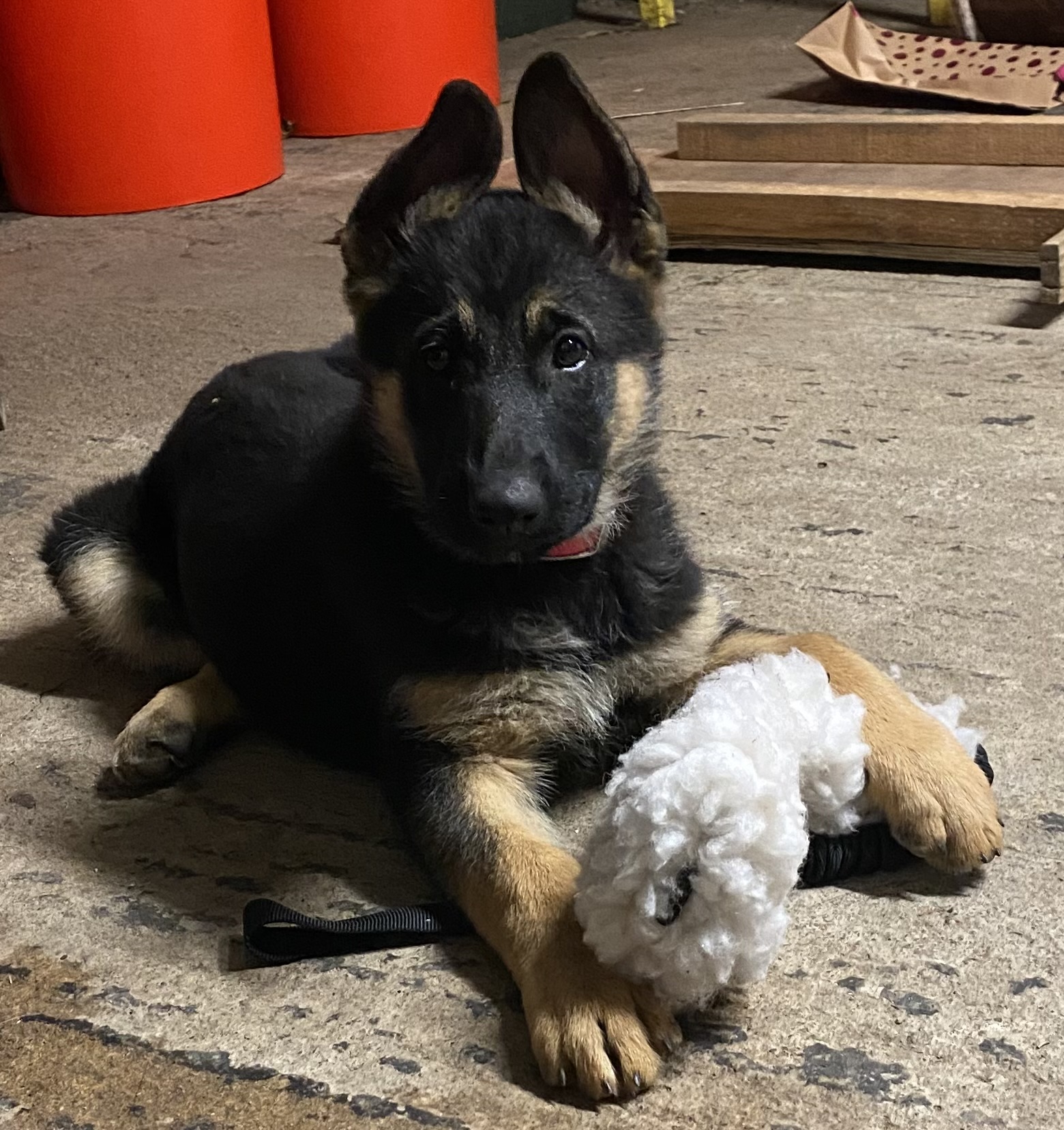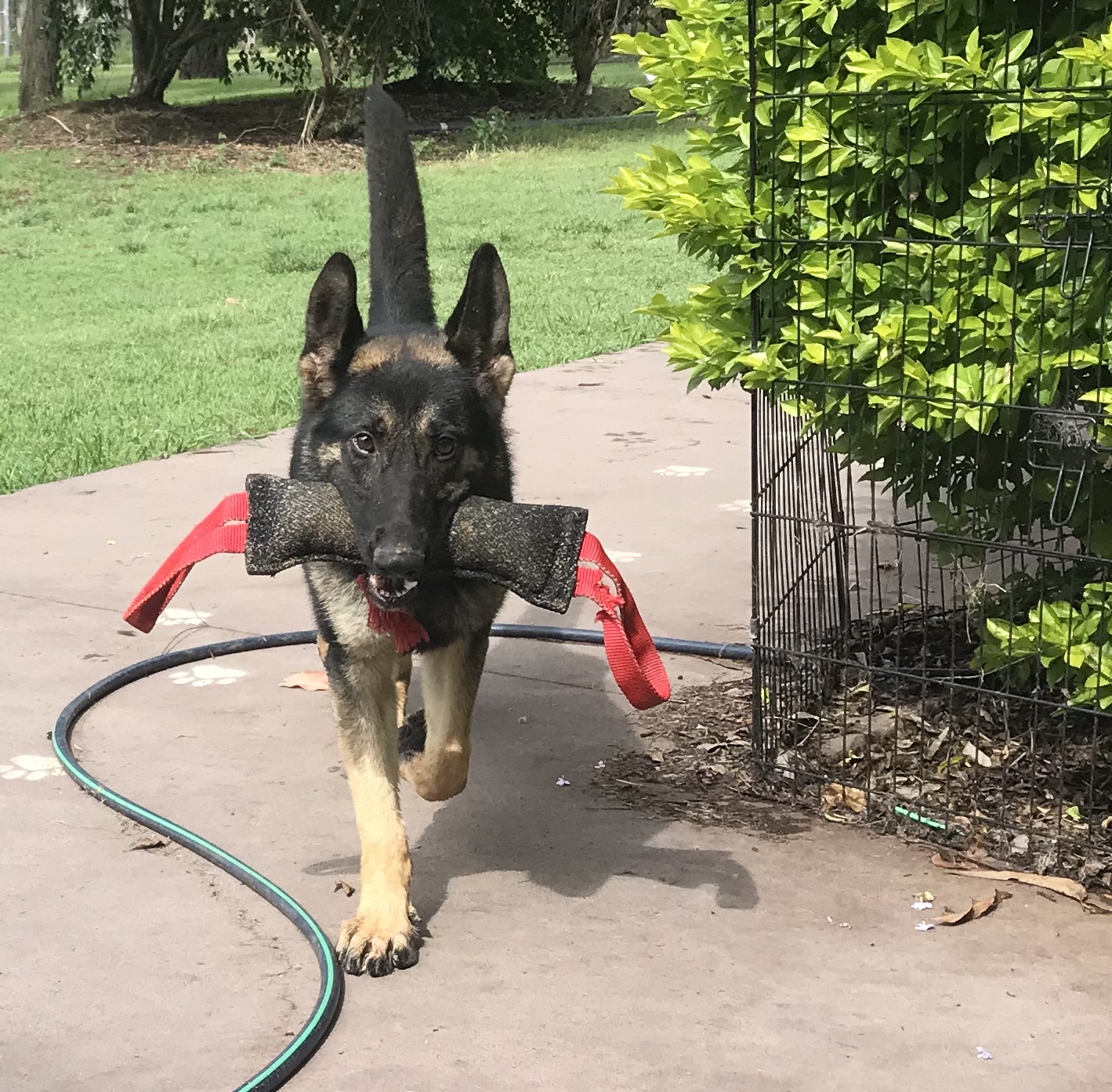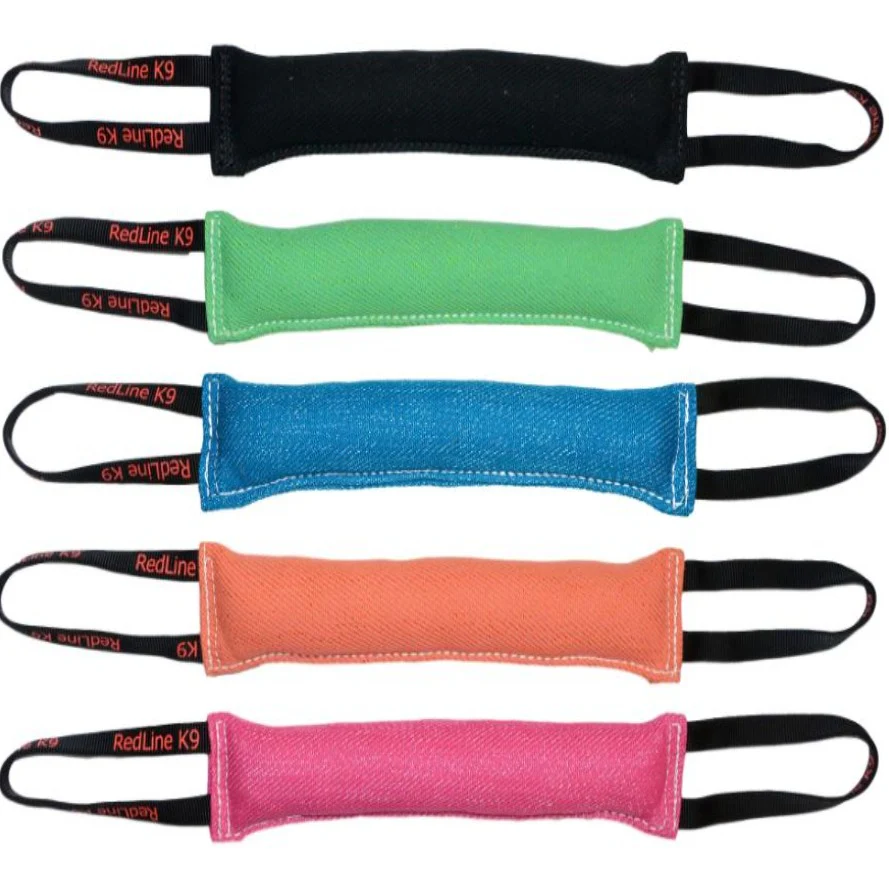NEWS
How to Play Tug With Your Dog – Build Grip & Engagement (German Shepherd, Malinois, Dutch Shepherd)
NEWS
How to Play Tug With Your Dog – Build Grip & Engagement (German Shepherd, Malinois, Dutch Shepherd)

How to Play Tug With Your Dog and Encourage a Correct Bite
(For German Shepherds, Belgian Malinois & Dutch Shepherds — based on Michael Ellis’s techniques)
Tug is more than just a fun game—it’s one of the most effective ways to channel your dog’s natural drives into structured learning. For high-drive breeds like German Shepherds, Belgian Malinois, and Dutch Shepherds, tug play develops correct bite mechanics, builds confidence, and strengthens the bond between dog and handler.
When done properly, tug becomes a foundation for obedience, protection work, and engagement. When done incorrectly, it can encourage weak grips, bad habits, or even conflict between dog and handler.
Why Tug Is Important
Tug is a safe, constructive way to:
• Teach correct biting – encouraging a full, deep grip instead of shallow or frantic chewing.
• Satisfy prey drive – fulfilling the dog’s natural instinct to chase, catch, and fight.
• Build confidence – especially in young dogs learning to win and carry their prize.
• Strengthen engagement – showing your dog that the handler is the source of all good things.
• Lay foundations for work – whether in obedience, IGP, detection, or personal protection.
Getting Ready to Play Tug
• Choose a strong tug toy (jute, leather, or French linen are best). Avoid household items like ropes or socks.
• Play in a safe area where the dog has space to move.
• Make sure the dog is energetic and in drive—tug should feel exciting, not forced.
Step 1: Make the Tug Come Alive
Michael Ellis teaches that the chase is as important as the bite.
• Move the tug like prey—low, fast, and unpredictable.
• Encourage your dog to commit to the chase before offering the bite.
• Avoid waving the tug in the dog’s face, which creates snapping and weak grips.
Step 2: Encourage a Full, Calm Grip
Once your dog bites:
• Apply steady resistance in a straight line—not upward jerks or hard yanks.
• Reward full mouth bites by letting the dog win the tug.
• If the grip is shallow, calmly slip the toy away and re-present it until the dog commits with a deep bite.
A correct grip should feel calm, strong, and crushing—not frantic or chewy.
Step 3: Winning Builds Confidence
A vital part of tug is letting your dog win.
• Allow the dog to carry the tug in victory.
• Sometimes run with them, other times chase them—make winning exciting.
• Use “wins” as rewards for strong grips and full commitment.
This builds the dog’s confidence and makes them eager to play again.
Step 4: Add Structure and Rules
Tug must be structured, not chaotic.
• Introduce a start cue (e.g., “Get it!”) so the dog knows when play begins.
• Teach an out command for releasing the toy.
• Always start and stop the game on your terms—this reinforces leadership.
Over time, tug teaches the dog discipline as well as drive satisfaction.
Common Mistakes to Avoid
• Pulling upward or thrashing the tug (leads to weak grips).
• Allowing play with poor bites (reinforces bad habits).
• Never letting the dog win (creates frustration instead of confidence).
• Ending the game suddenly without satisfaction (diminishes drive).
• Using unsafe toys (risks injury).
Tug FAQ: Common Questions Answered
👉 Is tug dangerous for dogs?
No—when played correctly, tug is very safe. The key is using proper equipment, applying steady resistance (not jerking), and teaching clear rules like a release command.
👉 At what age can I start tug with my puppy?
You can start tug play as early as 8 weeks old with a soft, puppy-appropriate tug toy. Keep sessions short and fun, focusing on engagement and confidence rather than strength.
👉 Will tug make my dog aggressive?
No. Tug actually helps dogs learn impulse control and structured play. When rules are in place, it strengthens your bond and teaches the dog that working with you is the most rewarding game.
👉 How long should a tug session last?
For puppies, just a few minutes at a time. For adults, 5–10 minutes is plenty. Always end the game while your dog still wants more—this keeps their drive and engagement high.
👉 Should I always let my dog win?
Not always. Mix it up. Sometimes you win, sometimes the dog wins. However, letting the dog win regularly—especially for a strong grip—builds confidence and drive.
Final Thoughts
Tug play, when done right, is one of the most powerful bonding and training tools for shepherds and Malinois. By following Michael Ellis’s techniques, you’ll encourage deep, calm grips, build your dog’s confidence, and strengthen engagement—all while having fun.
Whether your goal is family companionship, obedience, sport, or protection, tug lays the foundation for a strong working relationship with your dog.
At VomSirius, we believe that structured tug play is not just a game—it’s a vital step in raising confident, powerful dogs ready to excel.
Would you like me to also create a short social media caption (like a teaser with a call to action) so you can share this article on your kennel’s Facebook/Instagram when it goes live?
